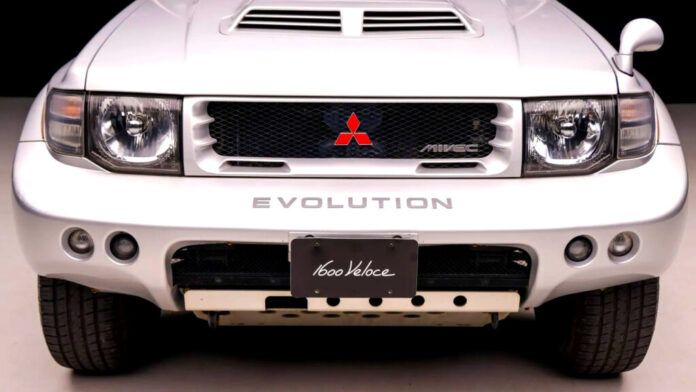- Mitsubishi built the Pajero Evo to homologate its Dakar Rally SUV.
- Only 2,700 units were made, making it one of Mitsubishi’s rarest.
- This example was imported from Japan in 2022 and listed in New York.
The Mitsubishi Pajero Evolution may not enjoy the same cult status as the Lancer Evo, yet it shares the same rally-bred DNA that made its sibling a legend. Think of it as the wilder cousin, the one who left the tarmac for the dunes, and over the years, collectors have caught on. Values have climbed sharply, and it’s easy to see why.
var adpushup = window.adpushup = window.adpushup || {que:[]};
adpushup.que.push(function() {
if (adpushup.config.platform !== “DESKTOP”){
adpushup.triggerAd(“0f7e3106-c4d6-4db4-8135-c508879a76f8”);
} else {
adpushup.triggerAd(“82503191-e1d1-435a-874f-9c78a2a54a2f”);
}
});
Read: Mitsubishi Pajero EVO Is A Rally-Bred Legend That Only Gets Cooler With Time
Mitsubishi created the Pajero Evolution as a homologation model for its entry in the 1998 Paris-Dakar Rally. The brand didn’t just tweak the SUV’s styling; it gave it a serious mechanical rethink, producing what remains the most formidable Pajero ever built.
Production was limited to roughly 2,700 examples, and one of these fairly rare gems has now surfaced for sale in New York.
Bring a Trailer
This 1997 Pajero Evo has been listed for auction through Bring a Trailer and was imported from Japan in 2022. It has 218,000 km, or roughly 135,000 miles, under its belt, but for a vehicle built as tough as this, this may not be much of a deterrent for potential bidders.
While it would have been cool if Mitsubishi fitted the Pajero with the Lancer Evo’s 4G63 engine, it instead equipped it with a naturally aspirated 3.5-liter V6 delivering 276 hp and 256 lb-ft of torque that is coupled to a five-speed automatic transmission.
The Pajero Evo also has a locking center differential, limited-slip front and rear differentials, and a two-speed transfer case. Clearly, it’s a very serious performer.
It also looks incredibly cool. Based on the two-door Pajero, the Evo has distinctive front and rear bumpers, hood scoops, flared wheel arches, and a large rear spoiler. This example is painted in Satellite Silver Metallic and retains the original 16-inch wheels.
Also: Mitsubishi Lancer EVO Might Not Be As Dead As You Think
var adpushup = window.adpushup = window.adpushup || {que:[]};
adpushup.que.push(function() {
if (adpushup.config.platform !== “DESKTOP”){
adpushup.triggerAd(“bb7964e9-07de-4b06-a83e-ead35079d53c”);
} else {
adpushup.triggerAd(“9b1169d9-7a89-4971-a77f-1397f7588751”);
}
});
As a car from the late 1990s, the interior looks very outdated by modern standards, though that’s part of its charm. There’s the classic four-spoke steering wheel, gauges for the battery voltage and oil pressure, and a radio. Granted, that’s pretty basic, but that was on par, at the time, for a homologation special.
For anyone tempted to trade Wi-Fi for wheel ruts, this Pajero Evolution might be the ticket. It’s tough, rare, and gloriously unnecessary in the best way. Check out the listing here before someone else snaps up your next questionable life decision.
var adpushup = window.adpushup = window.adpushup || {que:[]};
adpushup.que.push(function() {
if (adpushup.config.platform !== “DESKTOP”){
adpushup.triggerAd(“bb7964e9-07de-4b06-a83e-ead35079d53c”);
} else {
adpushup.triggerAd(“9b1169d9-7a89-4971-a77f-1397f7588751”);
}
});



